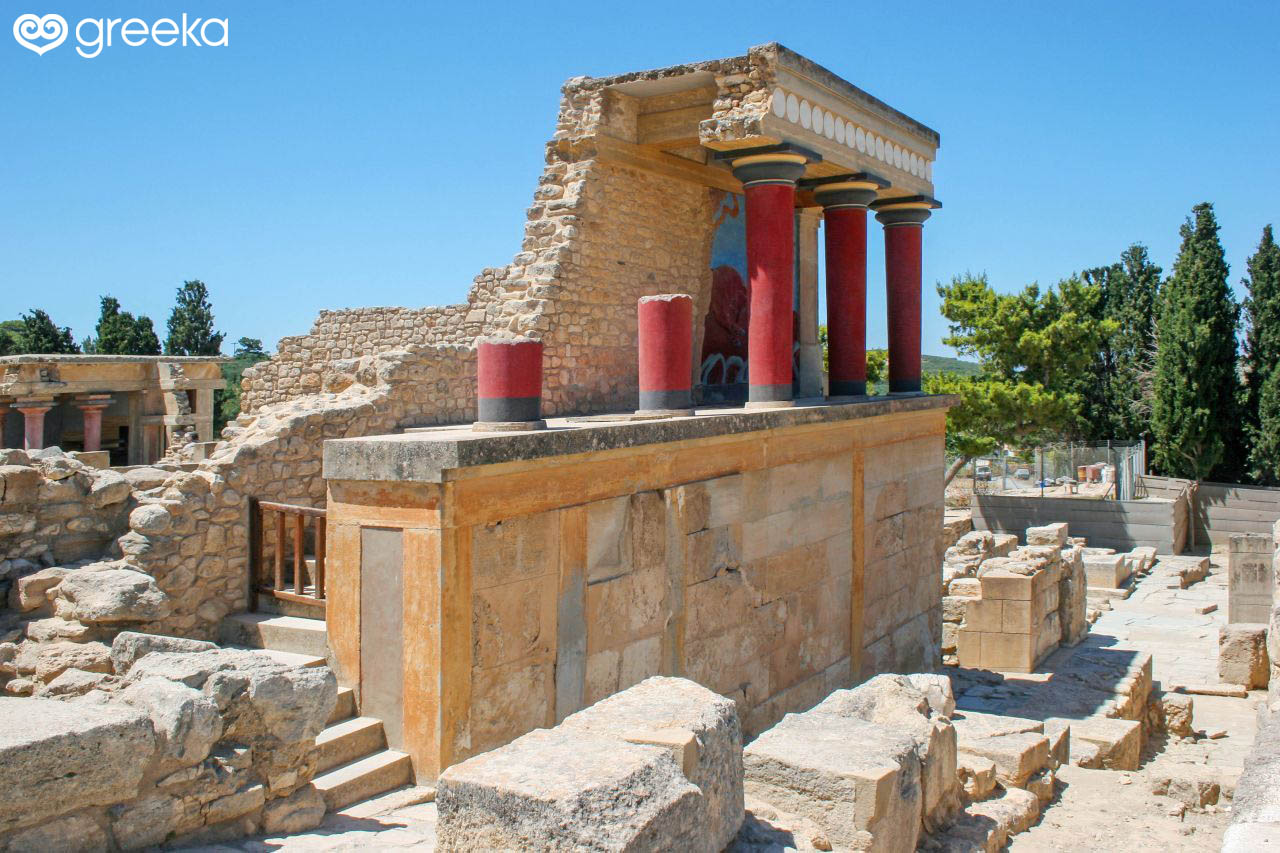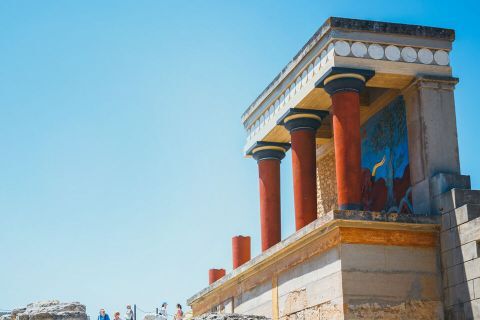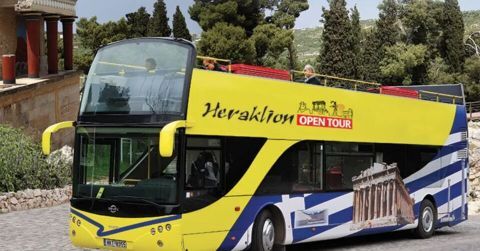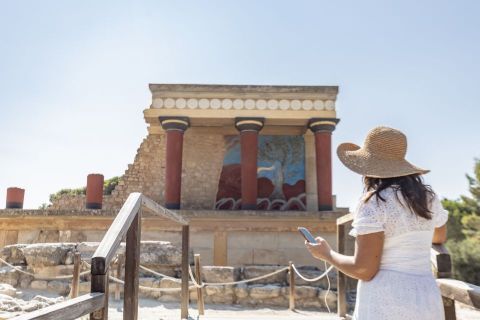I visited the Minoan Palace Of Knossos with my wife in April 2012. We went by bus from Rethymno to Knossos.The Minoan Palace was very large over 20,000 square meters. The archaeological site of Knossos is 5 km southeast of Heraklion, in the valley of the river Kairatos. We had a local guide who was very familiar with the history of the Palace. The guide gave us a fantastic presentation of the Palace.
If you go to Crete you must visit the Palace. It is the most important monument at Crete. It was intresting to see how advanced the Minoan civilication was at these times 4000 years ago. They even had a water system. It was fine to see the ruins and the very detailed wall fresco paintings. Sir Arthur Evans made a hard work when he was leader of the excavations. After his death in 1941, responsibility for the excavations was assumed to present day by the British School Of Archaeology. Some parts of the Palace has been built up in recent years, using concrete, was not so good. Our visit there was very impressive. If you like history, I suggest that you visit The Palace In Knossos.

















